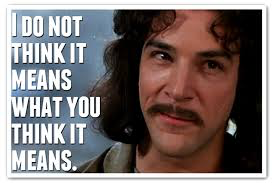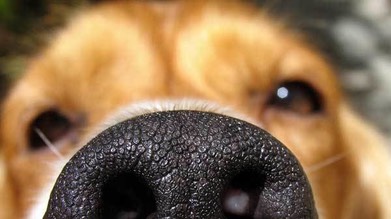
Being a dog trainer means I see an incredible amount of dog related information pop up on social media. I see posts on groups from members dishing out advice for random issues. Some of it is good information, some is misinformation. For those who are members of my group, you have often heard me say that civil discussion and debate is always good. It is how we all learn.
Unfortunately, I also see videos of trainers working with dogs discussing how to correct a dog around others, what kind of leash pop you should use, what tone of voice is appropriate, how an e-collar correction is effective. Again some of this discussion can be valuable, much of it however creates issues. Sometimes the proponents of these approaches naysay positive reinforcement as only working with the good and ignoring the bad stuff.
They say things like,
“How is a dog supposed to learn what they are doing wrong if you are not correcting the negative behavior.”

This kind of mental exercise is unfortunate. It really does a disservice to the dog. It is also misleading the people who follow the training advice believing it to be quality information.
Let me be blunt. It does not matter how emphatic the person presenting the information is. It is irrelevant that "it just makes sense”. For those who think the information is quality…it really is not. It is psychobabble dressed up as science. It completely ignores the science of psychology. Unfortunately, many buy in.
I am not saying anybody who calls themselves a positive reinforcement trainer is totally accurate nor effective. Frankly, there are problems on that side of the fence as well especially when one deals in absolutes. Students of psychology know that punishment can work. Timing has to be superb. The punishment has to be immediate. The punishment has to be at such a level that habituation does not occur. Emotion and feeling has to be left out of the equation entirely.
Most individuals suck at all of this.

One of the dangers of punishing incorrectly is that it brings a wealth of drawbacks which have so much potential to cause other more serious behaviors to emerge. (For more on the dangers of punishment and using aversive techniques, see "punishment and why it does not work")
In March I wrote a blog post explaining differential reinforcement. Take a look at the blog. It examines the some of the nuts and bolts of this concept.
Differential reinforcement is the retort to the claim that a dog, especially a problem dog, cannot learn simply from positive reinforcement as you are not correcting negative behavior.
To quickly review, when we talk about differential reinforcement and its application, differential reinforcement consists of two parts: (1) withholding reinforcement for the problem behavior, and (2) providing reinforcement for an appropriate replacement behavior, an incompatible behavior, or the absence of the problem behavior. By engaging in differential reinforcement, one IS addressing what the dog is doing wrong without engaging aversives and thus avoiding the pitfalls inherent in using punitive measures. Again for a more detailed review, see Part One as mentioned above.

How does one engage in effective differential reinforcement?
Like most training, it is best to approach the problem systematically. Here is a helpful checklist to establish before engaging in any intervention practices:
A. Define the undesirable behavior: Make this as concrete as possible. Too many owners are too wishy washy with what they do not want. If you do not have a concrete definition in your head of what the undesirable behavior is, how are you supposed to communicate this with your dog. It is confusing for dog and owner alike. Avoid that confusion.
B. Choose an alternative desirable behavior for your dog to perform. You want to choose a behavior that is incompatible with the undesirable behavior. Sometimes creativity at this stage is key to success. If you can chose an alternative behavior your dog really enjoys, it is more likely to emerge.
C. Determine a time interval: What is a reasonable time for you to expect change? Too many owners want instant change. However, they do not put the time and effort into encouraging the change to happen. True behavior modification takes time. Do not fall into the trap of “I tried everything and nothing is working”. If you find yourself rationalizing the lack of behavior modification success with this statement, it is generally because you are not engaging in any type of effective structured intervention and you are not devoting the time and effort needed in order for the practices to have the desired affect.
D. Set the criterion: What practical exercises will you use to get true behaviour modification. Are those exercises compatible with the differential reinforcement rules presented in part one of this discussion? Are you using the tenants of classical conditioning, counterconditioning and systematic desensitization to achieve results?
E. Ignore inappropriate behaviors: This is the one that the naysayers push when criticizing positive reinforcement strategies. They make it black and white when it really is not. In most cases this step simply means being proactive as opposed to reactive. You achieve this by controlling the situation as much as you can, and manipulating the variables to prevent the unwanted behavior from happening. This step simply means engaging in effective counterconditioning practices. Set your dog up for success whenever possible.
F. Monitor your dog: Any time your dog commits the desired alternative behavior and you miss marking it, you are losing a valuable training opportunity. Set yourself up for success whenever possible.
To those who read this and say, “how is this any different from the psychobabble that Ken discusses above, it is just his opinion”. I respond with the following…
Classical and operant conditioning, counterconditioning, desensitization, differential reinforcement and learning theory are all core concepts of psychology and behavioral science. The concepts have been clearly defined, studied and accepted by the experts in the field. Furthermore, the concepts have been practiced successfully for centuries before they were ever put into any type of official scholarly framework. The concepts have not been debunked and have stood the test of peer review (for more on this see “The Dunning Kruger Effect”). The same cannot be said regarding many claims I hear presented from people promoting other methodologies.
Differential reinforcement is an interesting concept worth in-depth exploration especially for those who claim “I have tried everything and nothing has worked”. Follow the discussion and the steps in both parts of this blog post. If done correctly, you will begin to see desired changes in your dogs behavior.